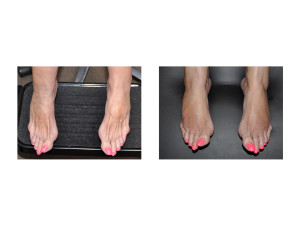
Loss of fat in the foot (pedal fat pad atrophy) can cause a variety of painful and dysfunctional symptoms. The loss of tissue thickness and the increased load bearing on the foot can cause pain that may not be adequately relieved by support and external padding. Fat grafting into these foot areas would seem to be a logical treatment although no objective studies have been published with the use of fat grafting to the forefoot.
In the advanced online July 2016 issue of the journal Plastic and Reconstructive Surgery, an article appeared entitled ‘Fat Grafting to the Foot – A Prospective Clinical Study’. In this paper twenty-five (25) patients were studied in a prospective randomized manner with 13 receiving fat grafting (Group 1) while the other 12 (Group 2) received conservative management over the course of a year. Ten patients in Group 1 underwent fat injections into both feet with a mean volume of 4.8cc per foot. At one year, Group 1 patients had improved foot function, less pain, and greater work/leisure activities. Group 1 had no change in tissue thickness, whereas in Group 2, the right 3rd metatarsal tissue thickness decreased significantly. Foot pressures in Group 1 did not improve. However, Group 2 had a significant increase in left foot pressure. When comparing the groups at 1 year, Group 2 had significantly higher foot pressures and forces than Group 1.
This is the first study that provides short term evidence that fat grafting into the foot improves pain and prevents worsening of foot pressures. Such fat grafting has previously been hypothesized that it can potentially create these effects. This paper provides clinical evidence that this fat grafting effect is real. It is known how exactly this effect occurs although it can be presumed that it occurs by the addition of viable tissue cells and improved vascularity, effects well known when fat is injected elsewhere in the body. The next question is whether such injected fat is maintained long-term in a body area that is exposed to high pressures.
Dr. Barry Eppley
Indianapolis, Indiana


